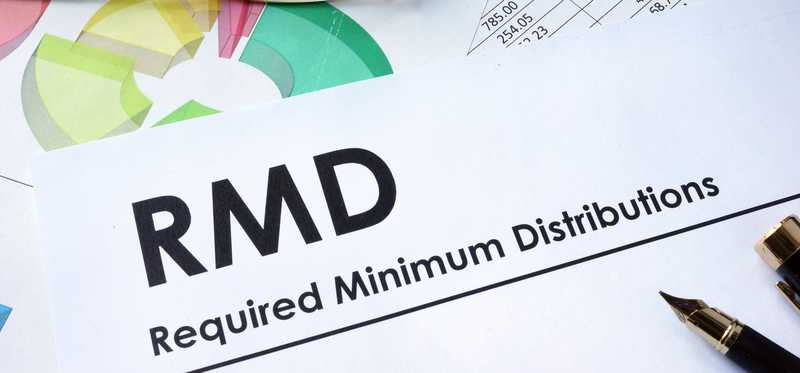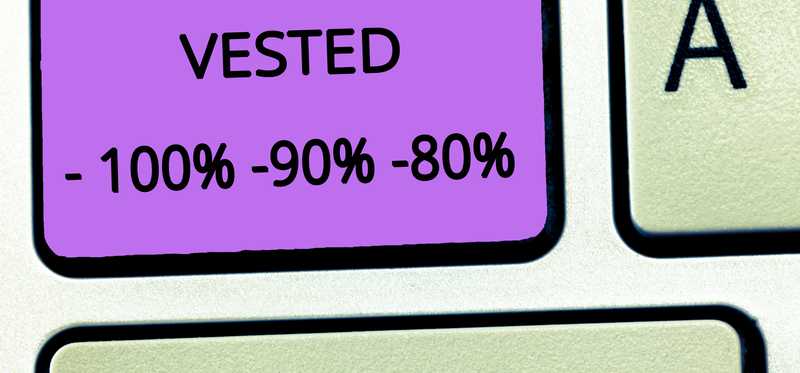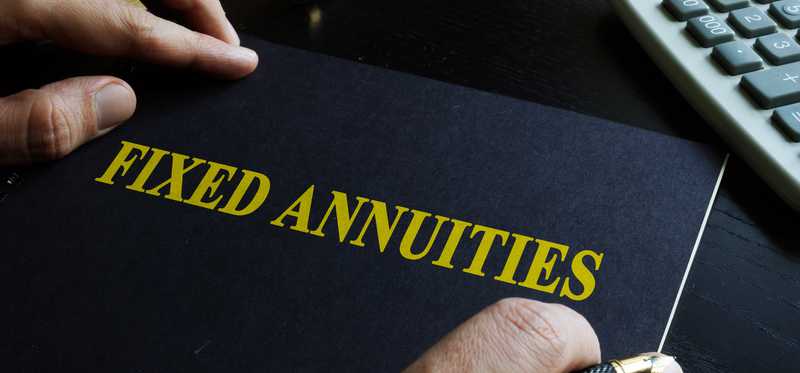15 Retirement Terms Every Investor Should Know

15 Retirement Terms Every Investor Should Know
Defining terms
It's hard to make sound decisions about your financial future when you don't understand many key retirement-related terms. So here's a quick rundown of 15 terms (or sets of terms) to know. See how many you already know and how many can be new additions to your knowledge set.
5 Stocks Under $49
Presented by Motley Fool Stock Advisor
We hear it over and over from investors, “I wish I had bought Amazon or Netflix when they were first recommended by The Motley Fool. I’d be sitting on a gold mine!" It's true, but we think these 5 other stocks are screaming buys. And you can buy them now for less than $49 a share! Click here to learn how you can grab a copy of “5 Growth Stocks Under $49” for FREE for a limited time only.
Previous
Next

1. Defined contribution vs. defined benefit
These are the two main kinds of retirement plans. Defined benefit plans are exemplified by pensions, and they used to be quite commonly offered by many employers. With a pension, you generally know how much income you can expect to receive -- it's a defined benefit. The more prevalent kind of plan these days is the defined contribution plan, such as a 401(k) account, where you (and often your employer) contribute a defined amount (say, 6% of your salary). In such plans, the ultimate income that the account will generate is often unknown, dependent on the performance of the investments in the account.
Previous
Next

2. IRA
The IRA acronym stands for Individual Retirement Arrangement, though these days most people associate it with Individual Retirement Account. Regardless, it's a very handy way to invest for your future. There are limits for those who are very high earners, but most folks can contribute up to $6,000 to their IRA(s) for 2022, plus an additional $1,000 for those aged 50 or older. That might not seem like much, but 25 years of investing $6,000 that grows at an annual average of 8% can get you close to $500,000. The contribution limits rise over time, too, so you can contribute more in future years -- and if your investments grow at a faster rate, you might amass much more. Another benefit of IRAs is that if you'd like to invest in individual stocks in your account, you can, and you can invest in just about any mutual fund, too.
Previous
Next

3. 401(k)
Another main kind of retirement account is the 401(k), which is offered to millions of workers by their employers. While you can invest in just about any stock and most mutual funds through an IRA, 401(k) plans generally restrict you to a limited menu of investment options. The 401(k) does have some upsides, though, such as its hefty contribution limit. For 2022, you can contribute up to $20,500 to a 401(k), and you can add another $6,500 to that, making it $27,000, if you're 50 or older.
ALSO READ: Can I Contribute to an IRA if I Have a 401(k) at Work?
Previous
Next

4. Traditional vs. Roth
Both IRAs and 401(k)s come in two main varieties -- the traditional and Roth. A traditional account accepts your contributions on a pre-tax basis, shrinking your taxable income and therefore your tax bill for the year of the contribution. A Roth account accepts post-tax money, meaning that your taxable income and tax bill don't change. Its tax benefit is back-loaded: If you follow the rules, you can withdraw money from the account in retirement tax free. That can be a big deal.
Previous
Next

5. Matching contribution
Another 401(k) benefit is that many employers will offer matching contributions, according to a certain formula. For example, your company might match 100% of your contributions up to 4% of your salary. So if you contribute 4%, which is $4,000, your employer will kick in another $4,000. That's free money, so it's almost always well worth maxing out.
5 Stocks Under $49
Presented by Motley Fool Stock Advisor
We hear it over and over from investors, “I wish I had bought Amazon or Netflix when they were first recommended by The Motley Fool. I’d be sitting on a gold mine!" It's true, but we think these 5 other stocks are screaming buys. And you can buy them now for less than $49 a share! Click here to learn how you can grab a copy of “5 Growth Stocks Under $49” for FREE for a limited time only.
Previous
Next

6. Required minimum distribution
Many retirement accounts -- but not Roth IRAs, generally -- feature required minimum distributions -- or RMDs. These require you to start taking distributions (withdrawals) from the account beginning after you turn 72. There is a formula used to calculate how much you must withdraw, and many companies that manage retirement accounts (such as Fidelity, or Vanguard) can determine your correct withdrawal for you and even send it to you automatically.
Here's an important detail: If you fail to take your full RMD on time, the penalty is big: You may have to forfeit 50% of the amount you didn't withdraw on time.
Previous
Next

7. Index funds
It's not only retirees and near-retirees who should know about index funds -- we all should. That's because low-fee broad-market index funds, such as ones that track the S&P 500, are one of the easiest ways to invest in the stock market. For many of us, they're the best way, too, letting us avoid having to study various stocks and decide when to buy and sell which stocks. Index funds can be great places to park your long-term dollars that you're investing for retirement. Even in retirement, you might keep a portion of your portfolio in stocks via index funds -- because if your retirement is likely to be 20 to 30 years long, some of your portfolio can be in long-term investments.
Previous
Next

8. Exchange-traded fund (ETF)
Exchange-traded funds (ETFs) are also important to know about, because they're very handy. They're essentially funds that trade like stocks. While some mutual funds have minimum investment requirements of $500 to $3,000 or more, you can buy as little as one share of an ETF via just about any good brokerage. Even better, many ETFs are index funds -- tracking the S&P 500 or other indexes.
Previous
Next

9. Target date fund
Many people with 401(k) accounts are given the option of investing in target date funds (also known as lifecycle funds) within them. Lots of mutual fund companies offer them, and you can buy into them outside 401(k)s, too. A company that offers target date funds will have a suite of them, each with a designated year. A 2030-designated fund will be designed for those planning to retire in or near the year 2030, and it will invest its assets accordingly. So a 2050 fund will be for younger investors and may be invested heavily in stocks, while a 2025 fund will park less money in stocks and more in bonds. Over time, the 2050 fund will shift its allocation as its shareholders get older.
Previous
Next

10. Vesting
Many of us have at some point received assets that come with a vesting schedule. The vesting feature means that we don't immediately have full possession of the assets -- instead, we will typically gain full ownership over time. Vesting is common with 401(k) matching funds from employers and with stock options and stock grants that some employees receive. As an example, if your 401(k) plan vests matching funds over three years, each time you receive a matching contribution from your employer, you'll take ownership of a third of it every year for three years. This system is designed to motivate workers to stick around, because every year when you receive new matching dollars, the vesting schedule starts anew for those dollars.
5 Stocks Under $49
Presented by Motley Fool Stock Advisor
We hear it over and over from investors, “I wish I had bought Amazon or Netflix when they were first recommended by The Motley Fool. I’d be sitting on a gold mine!" It's true, but we think these 5 other stocks are screaming buys. And you can buy them now for less than $49 a share! Click here to learn how you can grab a copy of “5 Growth Stocks Under $49” for FREE for a limited time only.
Previous
Next

11. Annuity
Annuities are good to understand because they can be extremely useful in retirement. They typically work by having you fork over a hefty sum to an insurance company in exchange for a series of regular payments for a specified period or for the rest of your life. (You can buy annuities that pay until both you and your spouse have passed away, too.) Annuities come in several varieties, with fixed annuities being the simplest and, arguably, the best for most. Annuities can deliver reliable income without any work on your part. Even the Social Security system is a kind of annuity -- you pay into it while working and then receive payments in retirement for the rest of your life.
Previous
Next

12. Full retirement age
Speaking of Social Security, the Social Security program assigns each of us a full retirement age at which we can start collecting the full benefits to which we're entitled. For most of us it's 66 or 67 or somewhere in between. You can start collecting your benefits as early as age 62, though, and as late as age 70. Start early and your benefit checks will be smaller -- but you'll receive many more of them. If you postpone, then for each year beyond your full retirement age that you delay starting to collect your benefits, they will increase by about 8%. Delaying from age 67 to 70 can make your benefits 24% bigger. When you start collecting your benefits can make a big difference.
Previous
Next

13. Withdrawal strategy
A key issue for those nearing retirement to grapple with is how to best take withdrawals from their retirement funds so that they don't run out of funds before they run out of breath. There's not a one-size-fits-all answer to this, and any strategy will have some pros and cons. An old rule of thumb suggested taking 4% in your first year of retirement and then adjusting for inflation in subsequent years, but that 4% rule has some drawbacks. Read up on the topic before you retire.
ALSO READ: Retirement Withdrawal Strategies: How to Withdraw Funds
Previous
Next

14. Fiduciary
There's a fiduciary duty that applies to many professionals, including many (but not all) financial professionals. It requires them to act in the best interest of their clients. It's worth seeking out fiduciaries and sticking with them if you need a financial pro. If your financial pro isn't a fiduciary, they may just be meeting a "suitability" standard, meaning that they can recommend any investment or action that's suitable for you -- but not necessarily the best one for you. They may have a conflict of interest, too -- such as if they will receive a sales commission from one of the options.
Previous
Next

15. Estate planning
Finally, we come to estate planning. It's something we all should do, especially as we get older -- and it's not just for wealthy people. An estate plan will dictate how you want your assets managed, distributed, and disposed -- when you die and sometimes even before. It will assign some important powers to some trusted people, too. An estate plan will include a will, at a minimum, but may also include a trust, forms designating powers of attorney, a living will, and a healthcare power of attorney, among other things.
5 Stocks Under $49
Presented by Motley Fool Stock Advisor
We hear it over and over from investors, “I wish I had bought Amazon or Netflix when they were first recommended by The Motley Fool. I’d be sitting on a gold mine!" It's true, but we think these 5 other stocks are screaming buys. And you can buy them now for less than $49 a share! Click here to learn how you can grab a copy of “5 Growth Stocks Under $49” for FREE for a limited time only.
Previous
Next

Improve your future
Understanding these 15 terms and concepts can help you make smarter decisions affecting your later years. You may decide to move some money into an index fund ETF, for example, and you might review your company's vesting schedule, if it has one, before thinking of switching jobs. You should remember to take any RMDs, too, and perhaps start contributing more to retirement accounts. The more you know, and the smarter moves you make, the more comfortable and less stressful your future should be.
The Motley Fool has a disclosure policy.
Previous
Next
Invest Smarter with The Motley Fool
Join Over Half a Million Premium Members Receiving…
- New Stock Picks Each Month
- Detailed Analysis of Companies
- Model Portfolios
- Live Streaming During Market Hours
- And Much More
READ MORE
HOW THE MOTLEY FOOL CAN HELP YOU
-
Premium Investing Guidance
Market beating stocks from our award-winning service
-
The Daily Upside Newsletter
Investment news and high-quality insights delivered straight to your inbox
-
Get Started Investing
You can do it. Successful investing in just a few steps
-
Win at Retirement
Secrets and strategies for the post-work life you want.
-
Find a Broker
Find the right brokerage account for you.
-
Listen to our Podcasts
Hear our experts take on stocks, the market, and how to invest.
Premium Investing Services
Invest better with The Motley Fool. Get stock recommendations, portfolio guidance, and more from The Motley Fool's premium services.